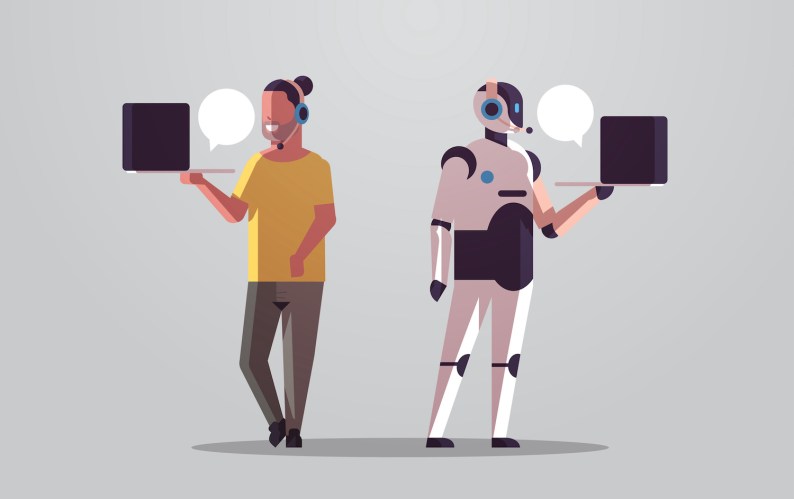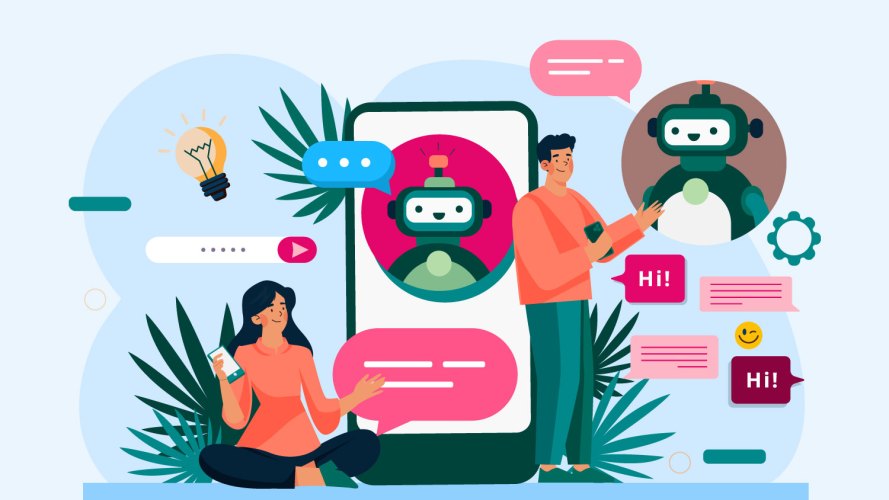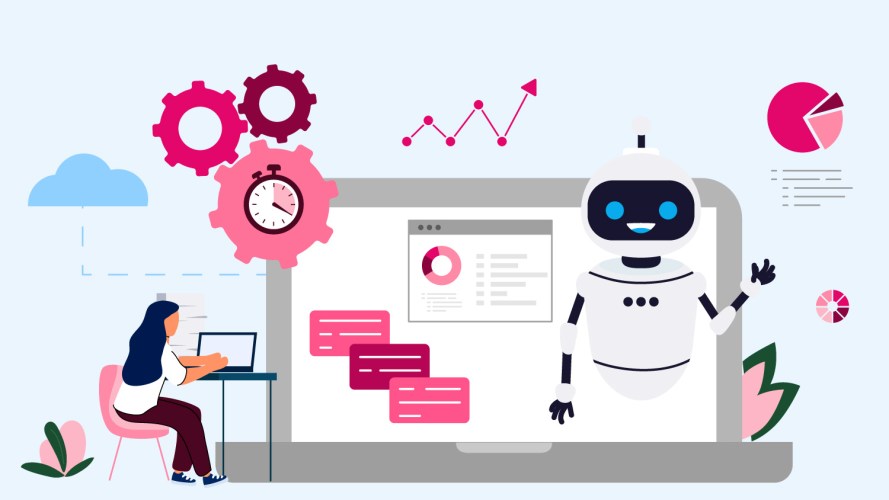A Quick Guide to Automated Customer Service — And Why It’s Actually Good for Humans

AI is changing everything. Here’s how automation can improve service for both your customers and employees.

Sophia Le-Dimitrova
Picture this: saving time, making fewer mistakes, and focusing more of your attention on what matters. This isn’t too good to be true — it’s exactly what over 80% of service leaders say automated customer service helps them do. But according to recent Salesforce research, only 58% of service organizations report using this technology.
In a world where customer expectations are increasing rapidly, it’s important for businesses to take every competitive edge they can. To help you put your best foot forward, we’ll dive into the ins and outs of automated customer service, and we’ll offer practical tips for making the most of automated tools.
Get actionable customer service insights
High-performing service organizations are using data and AI to improve efficiency without sacrificing the customer experience. Find out how in our latest State of Service report.



What is automated customer service?
Automated customer service uses technology to perform routine service tasks, without directly involving a human. For example, automation can help your support teams by answering simple questions, providing knowledge base recommendations, or automatically routing more complex requests to the right agent.
How to automate customer service
Here are a few examples of how you can use automation to improve agent productivity without sacrificing the customer experience:
- Chatbots: A chatbot can help reduce call or case volume by handling routine tasks such as looking up order status or scheduling appointments. The most advanced bots use generative AI to help personalize responses to customer questions. Perhaps that’s why chatbot popularity is on the rise: our research found that 55% of customers have used chatbots for simple customer service — up from 43% in 2020.
- Email and social media autoresponders: With customer cases on the rise, agents may not be able to respond to all queries right away. Autoresponders — whether through email or social media — can automatically acknowledge customer inquiries and provide initial information or help.
- Automated triaging: With workflow rules, you can automatically categorize and route simple support requests to the right customer service agent for faster handling. AI can easily surface the more complex inquiries that need an agent’s attention.
- Automated surveys or feedback requests: How can you improve your organization’s customer service? An automated system can send out a survey immediately after an interaction — gathering critical insights from customers.
- Proactive support: Keep customers in the loop by automatically notifying them of known issues like shipping delays or system outages. You can include a contact number or links to knowledge base articles so they know what to do next.
What are the benefits of automated customer service?
Automated customer service is a must if you want to provide high-quality, cost-effective service — and it’s especially ideal if you have a large volume of customer requests.
You can offload customer service agents by having automation handle the simpler, lower-effort issues. That way, humans can focus on more complex requests. This prevents agent burnout, lowers customer wait times, and provides more strategic work for agents.
For example, a chatbot can help a customer find the hours your store is open, while an agent can handle an issue with a multi-line transaction from one of your most loyal customers.
How do you know if your automated tools are working?
Automated customer service can be a little intimidating at first. After all, without a human involved, how can you know the technology is effective?
A best practice is to regularly test the customer service experience yourself. Interact with a chatbot, email your customer service department — basically, go through all of your automated support options and record your experiences. In addition, you can:
- Track customers throughout their support journey: Are customers dropping off from your chatbot before receiving a response? Or are they doing a search on your knowledge base and leaving without clicking on an article? These are clues that your customer self-service experience has gaps.
- Monitor customer feedback and sentiment: Analyze feedback from customers so you can make improvements or adjustments. When possible, segment the feedback by the automation tool used to solve the issue.
- Track key metrics: Measure the effectiveness of your automation efforts by monitoring KPIs like response time, average handle time, and agent admin time. It’s often helpful to take these measurements both before and after automating a task or process. That way, you can see whether or not you’ve made any improvements.
- Analyze customer service interactions: Review conversations between customers and bots to identify any common issues that might need to be addressed. These conversations can also be used as a guide for training agents or revising processes to improve the user experience.
How do you get started with automated customer service?
If automated customer service is new to your organization, try automating one function first and then measuring results. For example, try an email autoresponder and see the impact on your customer service metrics. This approach can also help you convince senior leadership that automated customer service is a worthwhile investment.
For automation to be effective, you need access to the right data at the right time. And if an aspect of your business changes (say the address of one of your stores), you’ll need to update your automated systems accordingly. And as always, track your progress: keep an eye on metrics like response rates, time to resolution, and CSAT to see what’s working and what’s not.
What’s next for automated customer service?
In two words: generative AI. This technology is rapidly evolving and will continue to transform the customer service industry. As a result, automated customer service tools will become even more sophisticated, and AI will provide more nuanced support to agents.
Still, the basics of great customer support will always be the same. Customers want their questions answered and their issues solved quickly and effectively. Automated customer service can be a strategic part of that approach — and the right tools can help your agents deliver the great experiences that your customers deserve.
How to calculate your ROI
How much could you save by using field service management software to increase worker productivity or improve first-time fix rates? This interactive tool will help you quantify your potential ROI in just a few minutes.






























